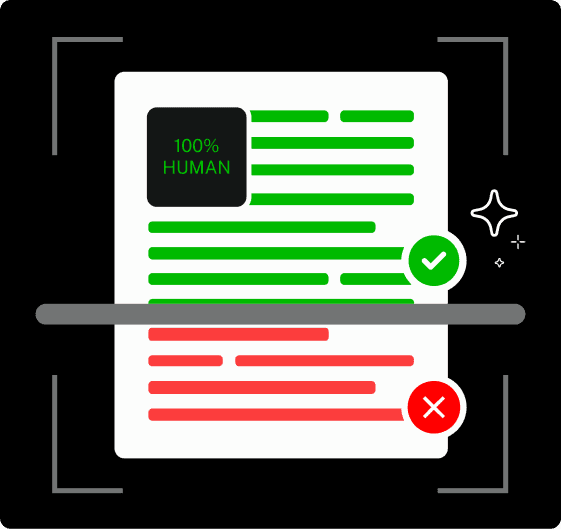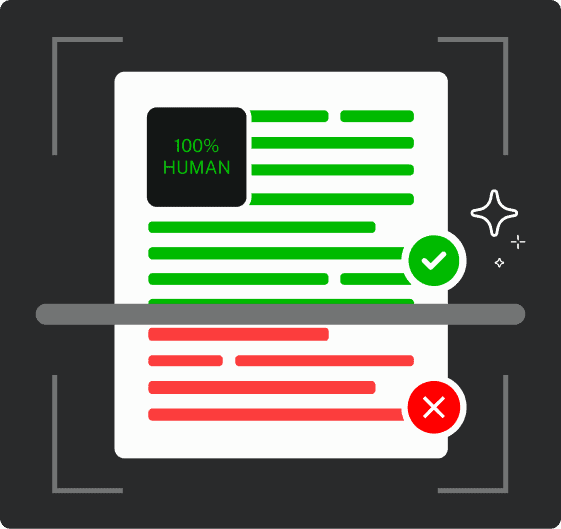Interrogative sentences are supposed to help us get answers.
But if you ask, “What means this?” instead of “What does this mean?” you’ll simply get puzzled stares instead!
Many people, including native English speakers and writers, sometimes can’t form correct questions. The English language can be tricky, after all.
I mean, is it “Where you are going?” or “Where are you going?”
Is a helping verb always necessary?
And why do some questions sound awkward even when they seem right?
The good news? Understanding how interrogative sentences work can help you bid goodbye to these confusions.
This blog will break down what is an interrogative sentence (or what an interrogative sentence is), its types, and some tips to avoid common pitfalls!
What Is an Interrogative Sentence?
An interrogative sentence is basically just a fancy way of saying “a question.”
These sentences help us gather information, clear up confusion, or sometimes, just make awkward small talk.
Sometimes, these sentences start with the usual suspects of curiosity, i.e., words like who, what, where, when, why, or how.


Never Worry About AI Detecting Your Texts Again. Undetectable AI Can Help You:
- Make your AI assisted writing appear human-like.
- Bypass all major AI detection tools with just one click.
- Use AI safely and confidently in school and work.
Other times, they rely on helping verbs like do, does, or is to form yes/no questions.
But no matter how they start, they all end the same way—with a question mark!
How Interrogative Sentences Differ From Other Sentence Types
Out of all other types of sentences, identifying an interrogative sentence is the easiest.
Why? Because it always ends with a question mark.
They are also the sentence type used to get information, confirm details, or make choices.
For example, declarative sentences make statements, imperative sentences give commands, and exclamatory sentences show strong emotions.
But with an interrogative sentence?
You can always expect an answer (unless it is a rhetorical question)!
Types of Interrogative Sentences (With Examples)
Interrogative sentences can be easily identified because of their unique structure.
Most of the time, they begin with a question word (like who, what, where, when, why, or how) or a helping verb (do, does, is, etc.).
After that comes the subject, followed by the main verb.
Take this question as an interrogative sentence example: “Where does she live?”
- Where is the question word
- does is the helping verb
- she is the subject
- live is the main verb
This order makes it clear that it’s a question.
However, not all questions stick to this format.
In casual conversations, sometimes the subject comes first.
For example: “You’re leaving when?” Here, You is the subject, are leaving is the verb, and when is the question word at the end.
Knowing the differences in these structures is what’s going to help you form correct interrogative sentences. Here are a few common types:
Yes/No Questions
Answer these questions in your head:
- Do you like to play in the snow?
- Is red your favorite color?
Both these questions required a one word answer.
You either said yes or no to one or both of them. That’s how yes/no questions work.
Pretty simple, right? In fact, yes/no questions are the easiest type of interrogative sentences.
Wh- Questions (Information Questions)
As opposed to yes/no questions, the wh- questions demand more specific answers. Their purpose is to collect information.
Usually, wh-questions begin with question words, such as ‘how’, ‘what’, ‘when’, ‘where’, ‘why’, and ‘who’.
To illustrate, let’s tweak the example questions we used to explain yes/no questions:
A wh-question for “Do you like to play in the snow?” could be “Why do you like to play in the snow?”
Similarly, “Is red your favorite color?” could be changed to “What is your favorite color?” to convert it into a wh-question.
Choice Questions
These types of questions give the listener options to choose from. Instead of asking for general information, they focus on selecting one choice from two or more possibilities.
They often include words like “which one,” “which option,” or “would you prefer.”
For example:
- Which book would you like to read—fiction or nonfiction?
- Would you prefer to go out for dinner or order takeout?
- Which color do you like better—blue or green?
Tag Questions
Now that you know what is a interrogative sentence, forming one doesn’t seem that tricky, does it?
See what I did there? That’s a tag question. This type of interrogative sentence does not demand an explanation or an answer.
Instead, it seeks confirmation, validation, or agreement.
The tag at the end could be both positive and negative. For instance:
- You don’t like to swim, do you?
- You had a great time, didn’t you?
- It’s hot today, isn’t it?
- Let’s go, shall we?
Rhetorical Questions
A rhetorical interrogative sentence, or simply a rhetorical question, isn’t meant to get an actual answer.
Instead, it’s used to make a point or emphasize an idea. It’s more like a question that answers itself.
Such questions are powerful figures of speech used in writing, speeches, and everyday conversations for persuasive effect.
The answer is usually so obvious that no response is needed.
For example:
- Are you kidding me?
- Who doesn’t love a good story?
- Isn’t life full of surprises?
Interrogative Sentences vs. Other Sentence Types
While, of course, you can form infinite sentences in English – or any language for that matter, all sentences fall into four main categories.
Besides interrogative, we have:
Declarative
A declarative sentence is the opposite of an interrogative sentence.
It is used to offer an explanation, present an opinion, or state a fact. Unlike interrogative sentences, these sentences end with a period.
Imperative
Imperative sentences are commands or instructions. They are used when you tell someone what to do.
Typically, these sentences also end with a period, but in some cases, they can end with an exclamation mark.
Exclamatory
Just as an interrogative sentence always wraps up with a question mark, an exclamatory sentence ends with an exclamation mark.
These sentences deliver strong emotions, including excitement, surprise, and urgency. These sentences are common in greetings and cautions.
The table below summarizes these differences more clearly for you:
| Type of Sentence | Purpose | Ends with |
| Interrogative | To ask | ? |
| Declarative | To explain | . |
| Imperative | To command | Either ‘.’ or ‘?’ |
| Exclamatory | To express | ! |
How to Form Interrogative Sentences Correctly
Having read the various interrogative sentence examples above, you might be wondering how to actually form them correctly.
Well, it’s no rocket science. You just need to follow a few basic rules, including the following.
Rule #1: Verb-First
One of the golden rules of forming interrogative sentences is flipping the usual word order. We let the verb take the lead while the subject follows.
Take this question: “Can she swim?” Here, “Can” (the verb) jumps ahead of “she” (the subject), so it’s clear that it’s a question, not a casual statement.
This minor change rewards interrogative sentences with their questioning tone.
Without this flip, “She can swim?” just sounds like you’re shocked that she isn’t sinking like a rock!
Rule #2: Using Helping Verbs Properly
Auxiliary verbs, or helping verbs, are essential for forming questions in different tenses.
Without them, it’s impossible to convert a statement into a question.
For example:
- Does she enjoy reading? (present simple)
- Did they finish the project? (past simple)
- Have you ever travelled abroad? (present perfect)
In each case, the auxiliary verbs does, did, and have help structure the question correctly.
Without them, you’d end up with sentences like “She enjoy reading?” which sounds more like a puzzled observation than a proper question!
Rule #3: The Right Sound & Sign
Lastly, punctuation and intonation make questions… well, questions. Every question must be punctuated with a question mark.
Otherwise, it will simply sound like a statement instead.
Similarly, when we’re speaking, our voice usually goes up at the end of a question. That’s what tells the listener we’re expecting an answer.
For instance, say “You’re coming to the party.” in a flat tone. It will sound like a fact.
But if you raise your voice at the end: “You’re coming to the party?” it will suddenly become a question. See the difference?
Common Mistakes With Interrogative Sentences & How to Fix Them
Wrong interrogative sentences are only formed when you don’t follow the rules properly.
Here are a few mistakes it can lead to.
Not Inverting the Subject & Verb
The main difference between a declarative and an interrogative sentence is word order. In the latter, the verb comes before the subject.
For example, saying “I can do this.” is a statement. But flip it to “Can I do this?” and voila! It’s a question.
Using the Wrong Auxiliary Verb
Misusing auxiliary verbs is another common mistake in forming interrogative sentences.
With these verbs, you’re able to structure your questions correctly so they sound more natural and grammatically correct.
Incorrect Question Word
Choosing the wrong question word can also lead to awkward or incorrect sentences.
For example, “What” and “Which” aren’t always interchangeable.
Many people also confuse “who” and “whom”.
Remember, everyday English prefers “who” in most cases, even when “whom” might be the technically correct choice.
How AI Can Help Improve Question Formation in Writing
Interrogative sentences, with all their types, can be a bit complex to wrap your mind around—especially for beginners.
But the good news is you can use AI to help you with question formation.
These two tools by Undetectable AI are genuinely a godsend:
Ask AI
Ask AI can be a big help with your school projects. We’ve all had those homework assignments that just didn’t turn out the way we wanted.
Maybe a sentence sounded strange, or you weren’t sure if the grammar was right.
This AI tool can check your sentences, make sure your grammar is correct, and even help with tricky math problems.
It gives you quick and accurate answers when you would’ve spent hours trying to fix mistakes.
AI Chat
There’s nothing worse than when a sentence sounds perfect in your head but looks all wrong when you type it. All fellow writers know the struggle!
This AI Chatbot by Undetectable AI is like a superhero for those days when our brain randomly decides to abandon us.
It helps structure and format sentences and makes them sound clear and natural—exactly how you pictured!
FAQs About Interrogative Sentences
How Do You Write a Proper Interrogative Sentence?
A proper interrogative sentence must start with a wh- word or an auxiliary verb.
Next, it should be followed by the subject and then the verb.
What Is the Difference Between a Tag Question and a Yes/No Question?
A tag question doesn’t have a definite answer. Instead, it is only asked to seek validation.
On the other hand, a yes/no question can be answered with a simple yes or no.
Can an Interrogative Sentence Be Used as a Rhetorical Question?
Of course, an interrogative sentence can easily be used as a rhetorical question if it’s not asked to seek information.
If an interrogative sentence is used to make a point or emphasize something, it acts as a rhetorical question.
Conclusion
Who knew questions could be so powerful? Well… you do now
If you could tell the interrogative sentence above was a rhetorical question, congratulations, you just understood the concept!
But if you couldn’t, just shake it off. We all have our off days, don’t we? (Last one, I promise!)
Besides, if you’re having a hard time forming interrogative sentences, you have Undetectable AI to count on.
It can brilliantly take your half-formed, incorrect sentences and churn out the perfect, grammatically accurate phrases.
Sign up at Undetectable AI today to explore its wide range of free AI tools!
Plus, try our AI Detector and Humanizer in the widget below!
